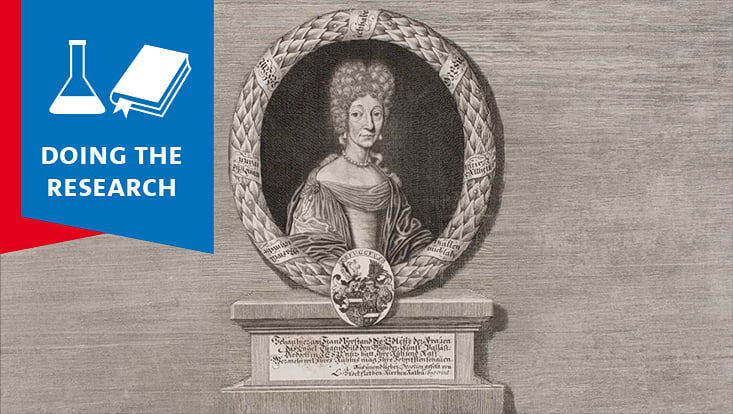Repairing damage caused by UV radiationHow an Enzyme Uses Sunlight to Repair DNA
1 December 2023, by Ingeborg Adler

Photo: DESY/Pateras
Damage to DNA causes aging, cell-death, and even cancer. Therefore, repairing damaged DNA is vital for all organisms. An international research team jointly headed by Universität Hamburg and DESY has now investigated how photolyase enzymes use solar energy to repair DNA. In the journal Science, the team describes how the process can be understood using time-resolved crystallography.
All life forms beneath the sun have to navigate harmful UV radiation. Ultraviolet radiation damage can appear in many forms. DNA, the molecule bearing all the genetic information of all living organisms, is especially subject to UV radiation. Ultraviolet radiation can lead, for example, to binding in the form of undesirable chemical bonds within the DNA. In certain circumstances, these bonds can introduce defects into the genetic code. This can lead in turn to cell-death or, in the worst cases, mutations and cancer. These defects are not rare. In bright sunlight, 50 to 100 networks per second can appear in human skin cells.
“To survive, life has developed powerful DNA-repair mechanisms. The photolyase enzyme provides an especially elegant solution,” explains DESY scientist Dr. Thomas J. Lane, who also conducts research in the Cluster of Excellence CUI: Advanced Imaging of Matter at Universität Hamburg. The enzyme uses sunlight to repair damage caused by sunlight. It is able to recognize the place where the UV radiation has resulted in DNA bonds and it sticks to the damaged DNA. There, blue sunlight is absorbed and used for chemical repair. In this way, the enzyme returns the DNA to its original, healthy form.
In a third step, the team wanted to find out how photolyase can recognize damaged DNA
“To better understand the way photolyase works, we were interested at first in the form of the enzyme immediately after light-absorption but prior to repairing the DNA. We also wanted to find out the exact sequence of the chemical reactions necessary for the transformation of damaged into healthy DNA,” researcher Prof. Nils Huse from Universität Hamburg explains the team’s approach.
Using time-resolved crystallography at the free-electron laser SwissFEL in Viligen, Switzerland, the researchers were able to identify the structure of the stimulated photolyase dye and thereby understand how the enzyme uses solar energy efficiently to repair chemical DNA. “The research only became possible thanks to the latest development of the X-ray free-electron laser. Its intensive femtosecond pulse enabled us to record X-ray images, thereby freezing all atomic movements so that we could follow the reaction step-by-step on the basis of the speed of molecules,” says first author Dr. Nina-Eleni Christou of DESY.
Moreover, for decades it was subject to debate whether the harmful binding in the form of 2 carbon-carbon bonds involved in the repair process was undone immediately or step-by-step. The researchers have ascertained that first one of the bonds is broken and then the second one. It also became clear that the enzyme has a binding pocket perfectly fitted to the form of the damaged DNA. The researchers were also able to show that the repaired DNA does not fit into this pocket because it is too big and has a different form. This explains why photolyase sticks above all to damaged DNA and not to repaired, healthy DNA.
The team indentified 10 time-resolved photolyase structures during DNA repairs. “All in all, our structures illuminate the workings of a powerful DNA repair system that uses sunlight elegantly to repair sunlight damage,” says Lane. Unfortunately, Lane continues, human beings do not have this enzyme so that we need other repair mechanisms. For almost all other living organisms, however, photolyase plays an important role in DNA repair.
The work was funded by the following organizations: The Helmholtz Association, Universität Hamburg, the Swiss National Science Foundation, the Göran Gustafsson Foundation, the Carl Trygger Foundation, Imperial College London, the Cluster of Excellence CUI: Advanced Imaging of Matter at Universität Hamburg, National Science Foundation (USA), and the Department of Energy (USA). Original article in English



